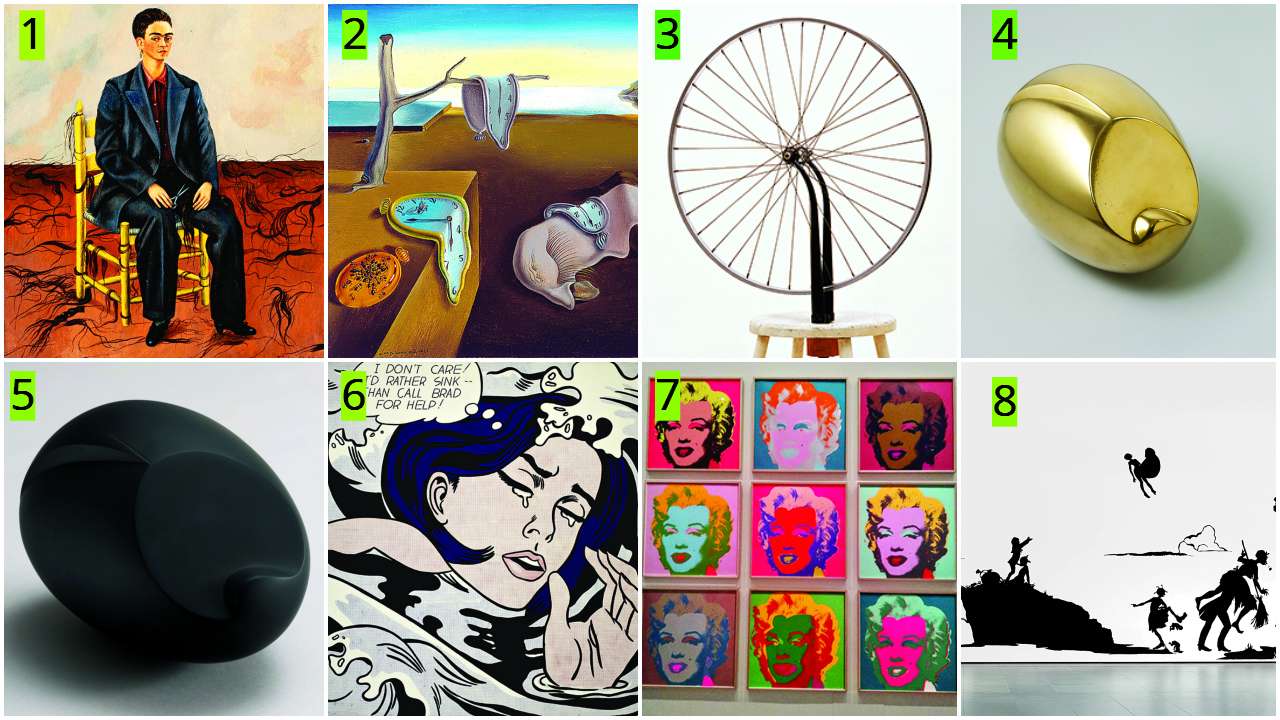
"I don't care! I'd rather sink – than call Brad for help!" sobs Roy Lichenstein's blue haired, comic-book Drowning Girl (1963) in a speech bubble behind a veil of Ben-Day dots, at one of 2018's landmark exhibitions – 'MoMA at NGV: 130 Years of Modern and Contemporary Art', at the National Gallery of Victoria (NGV), Melbourne. The Museum of Modern Art (MoMA) has loaned 200 such artworks to NGV while the Manhattan museum's undergoing renovation to expand itself by 4,600sqm. Much to NGV's luck, more than half the works on display had never left MoMA since their acquisition. These belong to six categories – architecture and design, drawings and prints, film, media and performance art, painting and sculpture, and photography.
Here, Lichenstein's girl joins other iconic avante-gardists like Pablo Picasso, Salvador Dali, Vincent Van Gogh, Henri Matisse, Jackson Pollock and Marcel Duchamp, who channelled the technological advancements of the late 18th-early 19th century or the disturbing socio-political realities of their time in their practice. The show has a time frame from 1860 to 2016, and the artworks reflect many of the issues and concerns of this period – the transition from factory-machine to computer-digital age, World Wars, Vietnam, colonisation, apartheid, landing on the moon, women's rights, civil rights, migration, etc. For clarity in viewing, the displays are divided chronologically into eight sections.
"'Art about Time' is MoMA's catch phrase, and we wanted to show how eclectic MoMA's collection is," explains NGV's chief curator, Miranda Wallace. "It starts off as Euro-centric, then becomes very American, has a bit of South America coming in, and in the last 40 years forms a completely changed world view. The exhibition brings the architecture and design collections of MoMA into dialogue with its paintings and sculptures – a new way of treating the collections, as otherwise these are exhibited separately."
It's quite the curatorial brainwave to have works by the very same Impressionists – the two Pauls (Gauguin and Cezanne), Vincent Van Gogh and Georges Seurat, which opened MoMA's first exhibition in 1929 – also open this show. Even the write-ups impress: Henri Matisse and Andre Derain get called 'wild beasts' by art critic Louis Vauxcelles for squeezing paint directly from the tube onto their 1905 artworks. Then, dealing with loss are the exhibition's key pieces – Andy Warhol and his pop art screen prints of Marilyn Monroe (1967), a reference to the woman beneath the gloss, while Frida Kahlo's post-divorce masculine appearance in Self-portrait with Cropped Hair (1940) rebukes society's definition of female identity. You will halt in your tracks on meeting Dziga Vertov's Man with the Moving Camera, (1929) and Dali's surprisingly small The Persistence of Memory (1931). If the collection feels a mouthful, play Tomohiro Nishikado's Space Invaders (1978) video game, where, out of compassion, he uses aliens as targets to humanise gaming addicts.
Be it subtle curation or the sheer number of works, multiple instances at 'MoMA at NGV...' have two artists cross timelines to communicate with each other. For instance, Duchamp mocks salon-prescribed art with his found object Bicycle Wheel (1951), in the same vein as Jeff Koons's New Shelton Wet/Dry Doubledecker (1981) stacks two vacuum cleaners in a box with lights to reflect everyday objects in pop culture. While these two abstract expressionists were contemporaries, Pollock's canvas of his choreographed paint-flinging can disturb or complement Mark Rotkho's multiple-wash zen work nearby, depending on the beholder. Conceptual artist Sherrie Levine creates an exact replica of Constantin Brancusi's bawling egg – The Newborn (1915) with her Black Newborn (1994), which the curators situate these next to each other. "Braucasi had made several casts of the egg; Levine's work questions what is the original artwork? The original idea or the readymade, final handiwork?" explains Wallace.
One is pleasantly surprised to learn that MoMA also collects universal design symbols. On display are the @ and the Reuse, Recycle and Reduce symbols, and the original six-striped LGBTQAI rainbow flag. Towards the end, gritty, contemporary works come to the fore. Ghanaian El Anatsui's Bleeding Takari II (2007), a shiny wall hanging of flattened bottle caps and seals reminds how the British colonisers used alcohol to barter goods and later, a flourishing slave trade. Kara Walker's Gone (1994), uses 18-century style paper cut-outs to tweak the couples at the intro and end of Margaret Mitchell's Gone with the Wind into disturbing narratives on sexual assault and racism.
"Many Afro-American artists felt the work was confrontational and perpetuated stereotypes, but it does slap you in the face," says Wallace.
Mourning dying traditions is the data visualisation video project Flight Patterns (2005) that illuminates the flight path of all aircrafts in a 24-hour period. The perfect goodbye to the show is Solari di Udine's Split Flap Board (1996), the analogue flight information sign which airports have discarded for digital because of the constant sound it makes as it flaps numbers, letters and symbols.
Buzz is, if you've caught 'MoMA at NGV...,' you've caught NYC's MoMA in a nutshell.